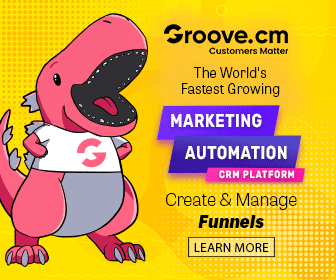You have built a great site, added stellar content, performed the requisite on site and off site SEO and now you are getting organic search traffic coming at a steady pace.
You can now sit back and toast your efforts because you’re work is done right?
Wrong!
There is still much more work to be done, and one of the most important jobs is to analyse site’s traffic behaviour and bounce rate.
What is Bounce Rate?
 |
| Image by OpenClipart-Vectors from Pixabay |
Bounce rate is a metric that is used to gage how long visitors stay on your site once they land there.
This metric can tell you a lot about what is wrong and right with the site. Also, it is a fact that Google uses bounce rate as a ranking signal in their algorithm.
Usually if visitors leave the site soon after they arrive it is a sign that something is wrong with the site, or they are not getting their needs met. This is how Google sees it.
Exceptions To This Rule
Consider this for a moment:
If a user that comes to a website finds exactly what they were searching for, why should they stay even a second longer, or browse the site further?
If the landing page has some type of exit link that takes them away from the site quickly, such as, as an email marketing opt in, or affiliate links that are converting in optimal numbers, or their question was answered quickly and accurately, then likely that site’s goals are being reached. Though, the search engines, such as, Google, won’t see this as a good thing, the site owner won’t care much.
But, if that is not the case, and you expect visitors to stick around, or offers are not converting then you will need to find out what is wrong with those landing pages that have such low bounce rates.
There is no one-size-fits-all answer regarding what is an acceptable standard of bounce rate. It is important to consider the intent of the site to determine what % is acceptable.
Tips To Improve Bounce Rates
Content Quality Versus Quantity
While some site owners focus on having a lot of site pages and constantly updating, they fail in providing high quality content. This can result in a high bounce rate, especially when the site is focused on informational content that web traffic is not responding well to.
This does not mean that you should post once every three weeks, this means that there should be regularly scheduled content added, but, such that is high in quality and will engage visitors to maintain a low bounce rate. If you can’t swing the balance of quality and quantity you can always outsource.
Also, it’s important that the content be properly formatted for the web. What works best is short paragraphs, bullets, appropriate paragraph headers and an overall easy to read layout, as opposed to, long blocks or text and long paragraphs.
Of course, content that is interesting, and portrays the personal voice of the writer who presents it, is usually more engaging than some generic write up that is dull and has no personality.
Site Design
The theme used on blogs and sites can also lower bounce rate. If the colors are not pleasing and easy to look at, people will leave.
Clean themes are usually best, they are classy and look good, and they allow you to show off your most important content, without it being drowned out by a loud design.
Here Are Some Considerations
- Is it easy to find pages on your site?
- Is the content buried and hard to locate?
- Is it clear where users should click?
- Will a quick scan of the page show users a clear picture of what they can expect to find?
Navigation
Navigation is another element of utmost importance in determining bounce rate. If, for example, the person that landed on a page likes what they read and wants to browse your site more, there needs to be easily accessible navigation of the entire site.
Top menu bars and sidebar menus are ideal to display your most important pages to web traffic.
Placing related content after a piece of content will entice users to stay on and read more.
Too Many Ads
Are there ads, like Google Adsense, in between every 3 lines of your site’s content pages? This is annoying and can be a major culprit in high bounce rates.
Ads should complement the content, not be an eye sore that annoys and distracts from what the visitor came to see.
Pop ups can be especially annoying, particularly those that keep popping up continuously as someone is trying to focus on reading, watching a video or navigating through a site.
Users cannot be expected to navigate through a sea of ads to zero in on the content they were promised when they came to the page.
Sidebar
There is a thin line between an over populated and an under used sidebar. A sidebar has numerous possibilities, and when used correctly it can have major benefits for keeping visitors on the site and also for displaying your most important calls to action.
Just as with the main content section of the site, too many ads in the sidebar is not always effective. Consider displaying your most popular content, such as, that that has the most comments.
An email marketing opt-in can have a great home at the sidebar, and your social media follow links as well.
Internal Links
If you have a reasonable quantity of content on the site then interlinking with relevant relevant keyword terms can also lower bounce rate.
Each page on your site should have at least one or two links to another page with a relevant relevant keyword anchor.
This will engage readers to browse other pages on your site, and can help to lower the bounce rate. Coincidentally, interlinking also helps with on-site SEO as well.
Final Thoughts
Typically, a lower bounce rate shows that you are doing something right. But, unless your site is making good money or visitors are performing the requisite calls to actions on a regular basis, a bounce rate that is higher than 60% means that there are issues on the site that need to be addressed.



